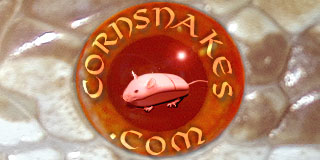Katie
Crazy for Corns Member
Whoops! I accidently put this post in the wrong forum. I got it in the right one this time though!
My oldest corn (normal het bloodred) is a yearling. I am getting 3 hatchlings in the next couple of weeks (normal, and 2 normal het amels). I am also thinking about purchasing a snow and an anery hatchling.
So this is what I would have by the end of the summer:
0.1 normal het bloodred
1.1 normal het amel
0.1 normal
1.0 snow
0.1 anery
The way I worked this out in my head was that in 3 years I could:
- breed the snow and the anery and get anery het amel
- breed the snow and the female het amel and get 50% amel het anery and 50% normal het snow
- breed the normal het amel to the normal and get some normals with a few het for amel
Then I could just breed the normal het amel to the normal het bloodred and have normals with a few het for amel.
Thos are the results I got from the progeny predictor. Are these right? They don't look right to me somehow but I'm not very good at this so I thought I'd better ask the experts.
Thanks in advance.
My oldest corn (normal het bloodred) is a yearling. I am getting 3 hatchlings in the next couple of weeks (normal, and 2 normal het amels). I am also thinking about purchasing a snow and an anery hatchling.
So this is what I would have by the end of the summer:
0.1 normal het bloodred
1.1 normal het amel
0.1 normal
1.0 snow
0.1 anery
The way I worked this out in my head was that in 3 years I could:
- breed the snow and the anery and get anery het amel
- breed the snow and the female het amel and get 50% amel het anery and 50% normal het snow
- breed the normal het amel to the normal and get some normals with a few het for amel
Then I could just breed the normal het amel to the normal het bloodred and have normals with a few het for amel.
Thos are the results I got from the progeny predictor. Are these right? They don't look right to me somehow but I'm not very good at this so I thought I'd better ask the experts.
Thanks in advance.
